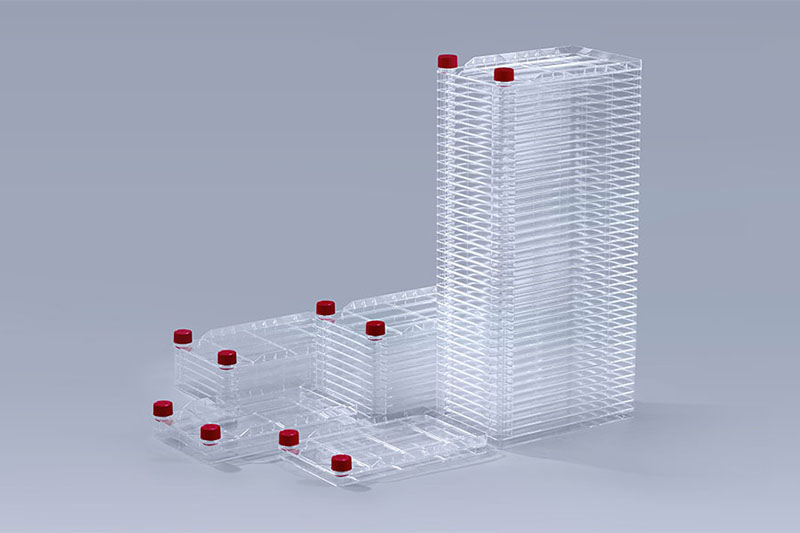When we use cell culture consumables such as cell factories to culture cells, we need to perform routine inspections on the cells. Observe the cell morphology and growth, as well as the pH changes of the culture, the presence of pollution, etc. According to the dynamic changes of the cells, change the medium or pass the cells. If any abnormalities are found, timely measures should be taken. Generally, observations will be made from the following four aspects:
1.Cell morphology
Cells in good growth status can be seen under a general microscope. The cells are highly transparent, refractive, and have unclear outlines. When cells grow poorly, their outlines are enhanced, vacuoles, lipid droplets, and other granular objects often appear in the cytoplasm. The gaps between cells increase, and the cell shape can become irregular or even lose its original characteristics. Such as epithelial cells becoming epithelial-like cells, etc.
2. Cell growth
After the primary culture or passaged cell suspension is inoculated, it begins to proliferate after different incubation periods. Cell growth of passaged cell lines, embryonic tissue or larval tissue can usually be seen on the second day and can be connected into sheets within a week. After the inoculated cells have grown over the bottle wall, they should be cultured again in time. Otherwise, due to nutrient consumption and metabolic accumulation, the cells will enter the stasis or degeneration phase.
3. Nutrient solution
Under normal circumstances, the culture medium is pink. If the cells are maintained at pH 6.5~6.6, the cells will fall off and die. When the culture fluid acidifies and turns yellow, it means that the metabolites in the culture fluid have accumulated to a certain amount and the culture fluid needs to be replaced with fresh culture fluid. If Hepes is added to the culture solution or cultured in a 5% CO2 incubator, the pH can be maintained relatively stable.
4. Microbial contamination
When microorganisms contaminate the cultured cell culture, the pH value will change and the culture solution will become turbid. After bacterial infection, due to the movement of bacteria, microscopic flashes can be seen under the light microscope; for fungal infection, many filamentous hyphae can be seen under the microscope, and sometimes there are dense clusters of spores; mycoplasma contamination requires some detection methods to detect .
These are the four observations that Fudau Bio shared with you when cultivating cells in the cell factory. I hope it will be helpful to everyone.
The FAI climbed 5.9 percent year-on-year in the first 11 months of 2018, quickening from the 5.7-percent growth in Jan-Oct, the National Bureau of Statistics (NBS) said Friday in an online statement.
The key indicator of investment, dubbed a major growth driver, hit the bottom in August and has since started to rebound steadily.
In the face of emerging economic challenges home and abroad, China has stepped up efforts to stabilize investment, in particular rolling out measures to motivate private investors and channel funds into infrastructure.
Friday's data showed private investment, accounting for more than 60 percent of the total FAI, expanded by a brisk 8.7 percent.
NBS spokesperson Mao Shengyong said funds into weak economic links registered rapid increases as investment in environmental protection and agriculture jumped 42 percent and 12.5 percent respectively, much faster than the average.
In breakdown, investment in high-tech and equipment manufacturing remained vigorous with 16.1-percent and 11.6-percent increases respectively in the first 11 months. Infrastructure investment gained 3.7 percent, staying flat. Investment in property development rose 9.7 percent, also unchanged.
 English
English



















































 Cell Factory
Cell Factory